Results 881 to 890 of 982
Thread: J-Nat club
-
10-11-2019, 08:35 PM #881Senior Member

- Join Date
- Jan 2015
- Location
- Apex NC
- Posts
- 535
Thanked: 90
[QUOTE=alx;1885626]With the risk of reading pickie here, I easily spot two distinct kiita in your group photo. The kanji for "ki" really does mean yellow, but as you have found out, a lot of the stones make a slurry that is yellow even though the stone might looks slightly red or orange. And the yellow kiita stones, their dried slurry usually dries white. The mineral composition of almost all of the Jnats contain yellow sand to a lesser or greater degree. The green asagi have hints of yellow, while the blue and gray asagi show less yellow, but there will be some. Silica is essentially white or clear, it is the clay that is red or yellow or brown, and sand it not 100% silica, Jnats are at the highest 65% silica, the other components make up the "mud" and include titanium and aluminum oxides plus 8 to 10 other components depending on the type of stone. Kiita, true kiita yellow stones are fairly rare, the kiita koppa are just that, bits and pieces. Large full size kiita are hard to locate. And probably more reside in the U.S. now than in Japan because of our active buying these past 25 years.
Hope this helps somehow,
Alx
This is what I call a Happy Kiita Camper
Attachment 312020
Alex yes a few are easily identified as kiita. Most of mine i think 9 in this pic are actually iromono to some degree so being how I am and wanting to try and understand details that are probably irrelevant since it would be just iromono. I want to try and decipher the base color. After sending some to Steve for his enjoyment I agree that best razor hone is an asagi base color. More green. One or two others maybe also and some are more of a brown which I guess is still kiita at least how most would sell it if there was not iromono in it. I guess I could also dry slurry and see.
And for your enjoyment here is another iromono you may like Alex.
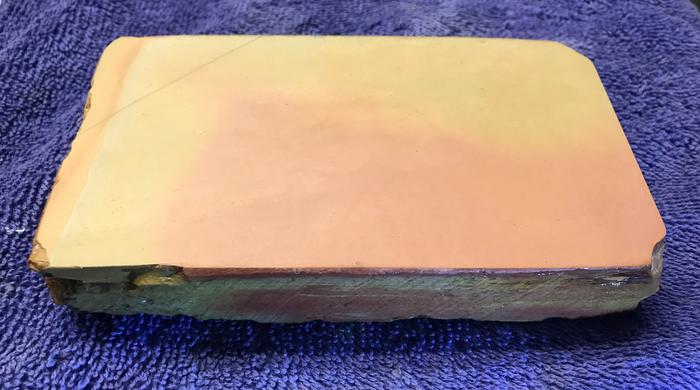
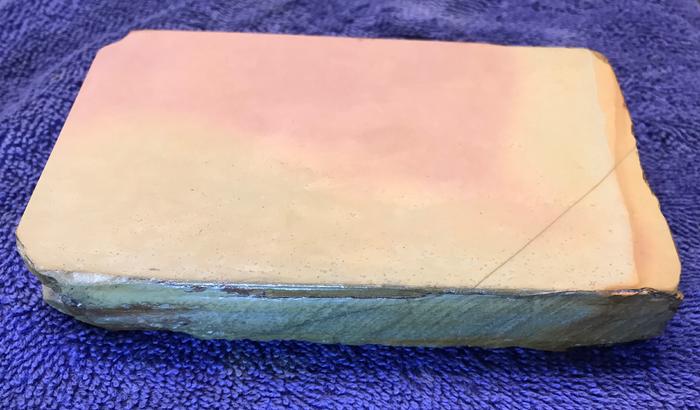
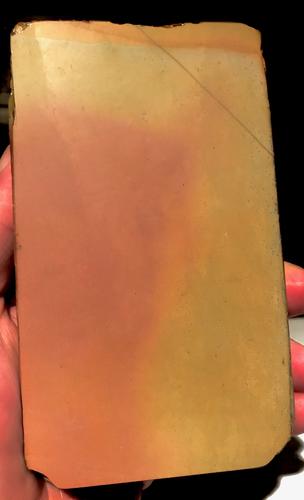
-
10-11-2019, 09:25 PM #882Senior Member

- Join Date
- Jul 2012
- Location
- Mooresville NC
- Posts
- 741
Thanked: 133
Since we are showing kiitas thought I would share my favorite kiita to hone on. Might be its second appearance in this post
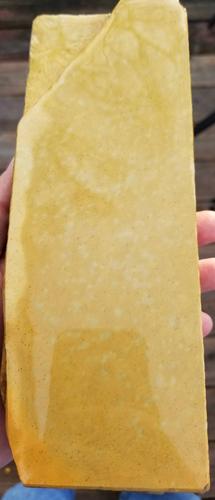
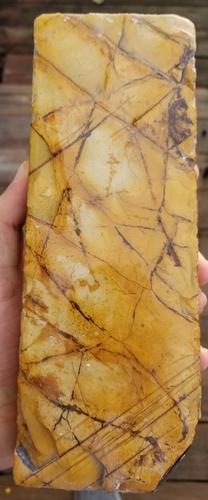
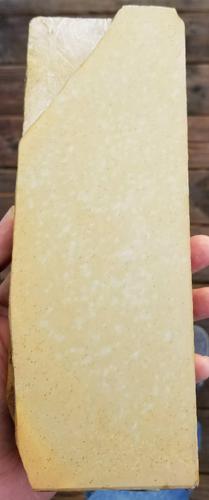
-
10-11-2019, 11:04 PM #883

Alex yes a few are easily identified as kiita. Most of mine i think 9 in this pic are actually iromono to some degree so being how I am and wanting to try and understand details that are probably irrelevant since it would be just iromono. I want to try and decipher the base color. After sending some to Steve for his enjoyment I agree that best razor hone is an asagi base color. More green. One or two others maybe also and some are more of a brown which I guess is still kiita at least how most would sell it if there was not iromono in it. I guess I could also dry slurry and see.
And for your enjoyment here is another iromono you may like Alex.
[ATTACH=CONFIG] [/QUOTE]
[/QUOTE]
Iromono of the quality of your above specimen are really my over all category of Jnats. Love your photos.
Alx
-
The Following User Says Thank You to alx For This Useful Post:
rideon66 (10-11-2019)
-
10-12-2019, 11:56 AM #884

 [
[
I meant to say, Iromono of the quality of your above specimen are really my over all favorite category of Jnats. Love your photos by the way.
Alx
-
10-12-2019, 06:01 PM #885

That explains a lot Alx, when I visited you I recall quite a few of your beloved stones had some Iromono. Some of the best examples I have laid eyes on and that is no exageration!
Here is my Nakayama Kurumaguchi with what I think is Iromono. It is super fast and very fine, my favorite stone. It made it as a reference on fikira's historyrazor web page. My pride and joy! Lol!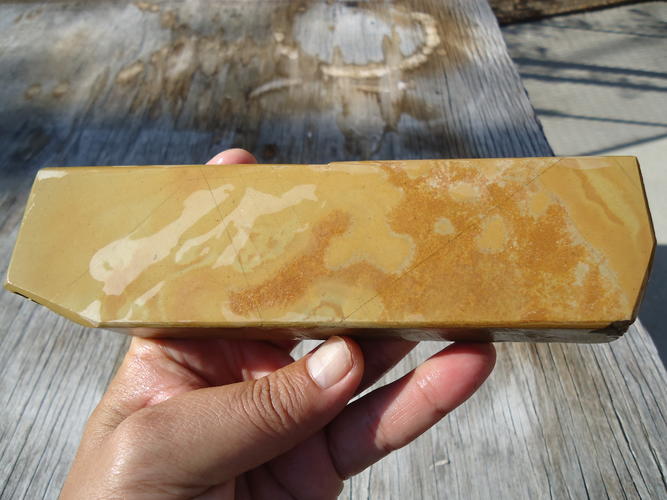
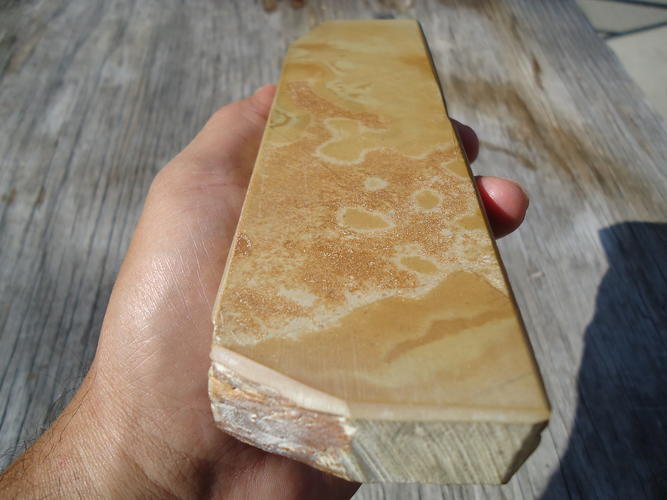
-
10-12-2019, 06:13 PM #886

The ‘grand prismatic Nakayama’!
My doorstop is a Nakayama
-
10-12-2019, 07:29 PM #887

I would say this iromono kiita is my most beautiful Jnat. Big slab.
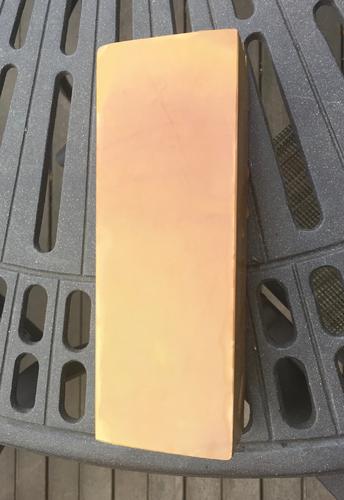
-
10-13-2019, 01:45 PM #888

These stones above I see as Kiita stones, with iromono or colored elements. The base clay components are yellow, but minerals and metals add color. Your stone has a yaki element, and it might cut just as well from one end of the stone to the other. Some inclusions host alternate minerals, and I am seeing that the iro elements can be the result of percolated material in these colorful bands and splotches, some of which may have origins in the original event. Much joy in using these beauties.
Alx
-
The Following User Says Thank You to alx For This Useful Post:
Toroblanco (10-13-2019)
-
10-13-2019, 05:47 PM #889

Thak you for clearing that up for me Alx, I was not sure. Yes the Yaki part looks like it is less than 1mm thick. The rest is kiita goodness, but I do like the look that the Yaki gives it. The reddish/pink color comes out much better in the sun while still wet.
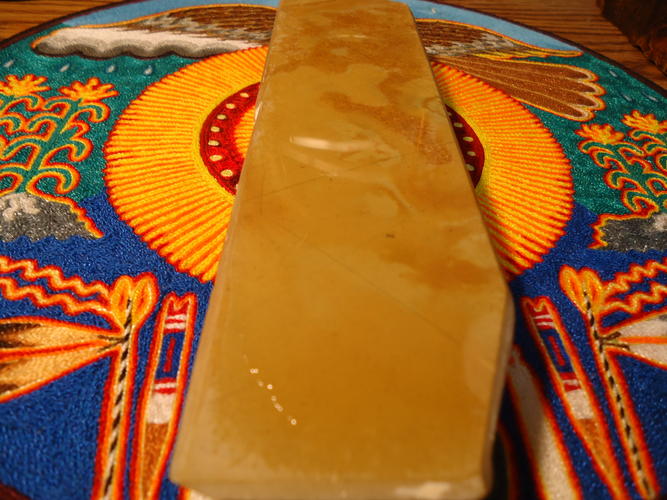
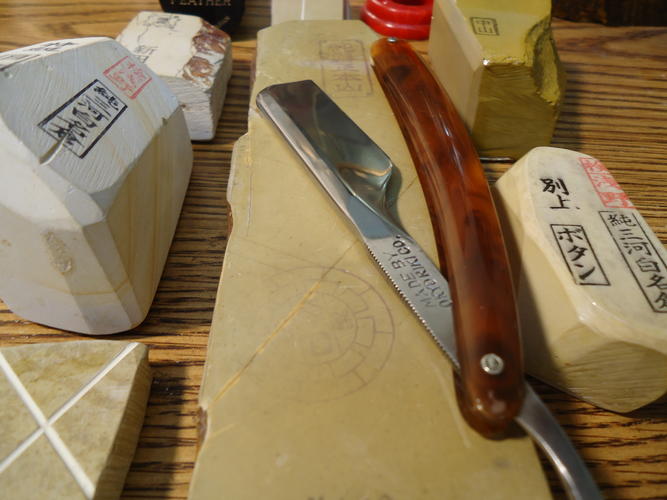
-
10-13-2019, 08:03 PM #890

Very interesting theme and very interesting stones. It is useful to look and read.


 2050Likes
2050Likes LinkBack URL
LinkBack URL About LinkBacks
About LinkBacks







 Reply With Quote
Reply With Quote